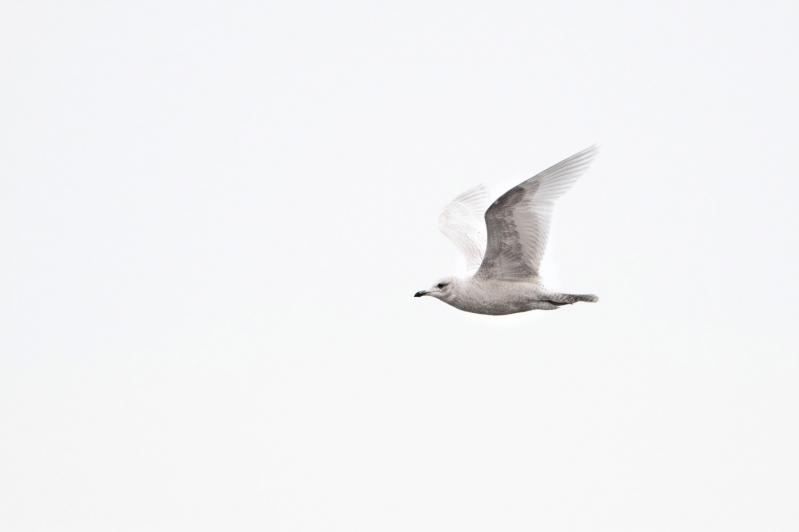It’s gull season on the East End.
Here are two things to know about gulls. First, as any birder will tell you, there is no such thing as a “seagull.” To keep it simple, in our area, during the winter, there are three species of gull: the great black-backed gull, the herring gull, and the ring-billed gull. Second, and this was news to me, gulls are recent arrivals to Long Island: They have been breeding here for less than 100 years.
When Ludlow Griscom published his book “Birds of the New York City Region” in 1923, he said of the great black-backed gull that it “rarely arrives in numbers much before Christmas.” The herring gull was “an abundant winter resident” but left in May to breed north of the Island. The ring-billed gull was listed as a “rare transient” to Orient and “irregular in summer.”
Can you imagine? Gulls were not that common in the summer. They all split for points north to breed. Bird populations shift.
In the winter, the East End has a wonderful diversity of gulls besides the three common gulls. Between the Shinnecock Inlet and Montauk Point, there’s a chance to see the Bonaparte’s gull, Iceland gull, glaucous gull, lesser black-backed gull, and even black-headed gull. The very best birders are sometimes able to spot distant black-legged kittiwakes from Montauk Point. The kittiwake is a gull that is generally found only over water.
So, there are many species of gull, not just one. To confuse things further, gulls undergo elaborate plumage changes, which in some cases, as with the herring gull, take four years to complete. A herring gull looks radically different when it’s 6 months old than when it’s 4 years old. If you see a group of gulls in the winter, you could be seeing gulls in varying plumage states from many species.
Whole books have been written about gull plumage. If you take one thing away from this article, just remember, seagulls don’t exist. As an exercise, try to get good at noticing our three most common species. Try to pick one apart from the crowd.
These are their most obvious field marks, in brief. The great black-backed gull is the largest gull species in the world. It’s also the only one with such a dark back, or mantle. The herring gull has a pale gray mantle and flesh-colored legs. The tips of its wings are mostly black with some white. This is our most numerous gull. The ring-billed gull resembles a miniature herring gull except it has yellow-green legs and it’s a more acrobatic flier. It has a black ring around its bill, hence its name. But that field mark isn’t always diagnostic, because in some plumages, herring gulls also have a ringed bill.
Gulls nest in huge colonies. John Bull, in “Birds of New York State,” noted that 2,000 herring gull nests were counted on Gardiner’s Island in 1967. They even used to nest at Goff Point on Napeague. They still nest on Gardiner’s Island and on Cartwright Shoal, just south of Gardiner’s, but, according to Angus Wilson, a co-compiler of the Montauk Christmas Bird Count, great black-backed gulls are starting to take over.
The presence of more great black-backed gulls is bad news for our local tern populations because, he said, great black-backed gulls “gobble up baby chicks in the blink of an eye.” Don’t hate on them too much though, for without them, “the stench of rotting fish on the beaches would be most undesirable,” he said.
As herring gulls are being displaced by great black-backed gulls, they in turn are displacing laughing gulls. Laughing gulls breed just south of Long Island. Apparently, they are losing ground to herring gulls. In the end, I theorize there will be just one gigantic great black-backed gull. It will eat everything. It will straddle the Atlantic. One pale, pink webby foot in North America, the other in Europe.
Reminder: I am not a scientist.
Gulls are expert fliers. Check them out at Long Beach in Noyac when the winds are blowing strong out of the northwest. They hang in the air, sometimes barely moving, scanning the waters below for food.
They’re smart. Observe as they pick up whelk or clam shells and then drop them from a great height to get at the meal inside. A herring gull was once observed bait fishing by dropping bread in a pond and then eating the goldfish that rose for the bread.
They’re also relatively long-lived. Each of our three most common gulls can live to be over 25 years old.
On a recent trip to Ditch Plain, I watched a ghostlike gull blend into the white winter sky above the jetty and soar east and out of view without a flap. Did I really just see that, I thought? That fragment of a gull was an Iceland gull, pictured with this column. Look at the picture and tell me why it’s not as beautiful as the much revered and sought-after snowy owl?
On Sunday at Montauk Point it was 18 degrees. The sun was bright and there was no wind. At the very edge of my visibility, hundreds of gulls looked like bits of cloud, falling from the sky into the water -- hunting. Heat distortion made the horizon appear to be pixilated and uneven. The gulls looked as if they were getting sucked into a whirlpool, disappearing and becoming part of the ocean.
It probably happens like that every day.
Bird sightings or other birding matters of interest can be emailed to Christopher Gangemi at [email protected].

